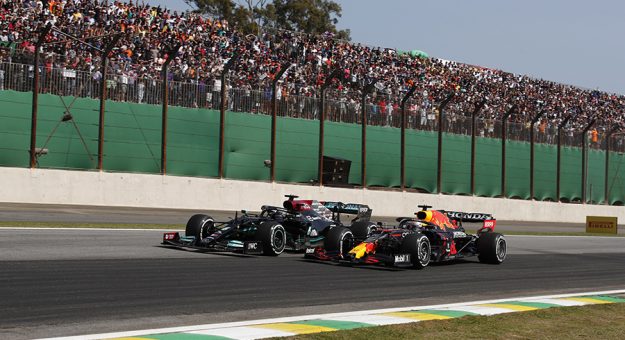BLOOMINGTON, Minn. — There will be 23 Formula 1 races next season and that number could expand to 25 in a couple years.
That’s the maximum number permitted by the rules, but then that number used to be 17.
Former F-1 czar Bernie Ecclestone believes the sport is diluting itself by having too many races and that there should be no more than 18.
But more races mean more money for the teams, Formula 1 and the FIA. And there are countries and markets around the world that F-1 wants to be in, and countries that are keen to host F-1.
“The demand we have from different countries and venues to get a slot in the F-1 calendar is tremendous,” said F-1 CEO Stefano Domenicali.
Africa, for example, could have a race in Egypt or Morocco or most likely in South Africa as the country has a turnkey circuit in Kyalami.
Furthermore, some countries would like to host two rounds: China at the current venue outside Shanghai and at a new street track in Beijing, and Russia at the current Sochi circuit and, in 2023, the new street track in St. Petersburg.
And now that the Miami race has been established for next year, F-1 is seeking a venue for a third race in the United States.
Indianapolis Motor Speedway owner Roger Penske wants F-1 to return to Indy, and there have been some initial talks with New York City officials.
Officials from Las Vegas were in Austin during the United States Grand Prix weekend to discuss having a race in their city.
“I’ve had the opportunity to meet recently with F-1 leaders and I’ve appreciated their time on this topic,” Nevada governor Steve Sisolak told the New York Times. “I’ve said it before, and I’ll say it again: the Silver State is quickly becoming the entertainment as well as the sports capital.”
The problem with a race in Vegas is where to stage it. Seeing F-1 cars scream down the famous Strip would be cool, but the casino owners don’t want anything obstructing access to their establishments. Moreover, the traffic on The Strip is horrendous and all of that traffic would have to be diverted on to other roads.
On the other hand, F-1 is booming in the U.S. thanks in part to Netflix’s “Drive to Survive” series. The Austin race was a sellout with 400,000 fans at the track during the three days.
“It feels like this is our acceptance into the U.S.,” Lewis Hamilton said at Circuit of The Americas. “I hope we get more races out here and I hope that the sport continues to grow because you can tell just how great the fans are out here.”
The casinos and the other businesses in Las Vegas would certainly like to have more than 100,000 race fans visit the city.
The solution for the high demand for grands prix looks to be a concept that has been discussed before, but now there is a good chance there will be a revolving race calendar. There would be about 15 established countries that would get permanent race dates. Melbourne, Monaco, Montreal, Monza and Miami, for example.
Then, the other countries — with the highest bidders getting priority — would rotate through, getting a race every couple of years.
Are 25 races at a variety of venues too much of a good thing? It certainly is a good thing for the bank accounts of Formula 1, the teams and the FIA!
I agree with Ecclestone that F-1 could reach an oversaturation point. TV viewership could decline because not every fan is going to devote 25 weekends a year at home in front of the TV. They might choose to do their own “revolving” by picking and choosing what races they want to watch and skipping the rest.
